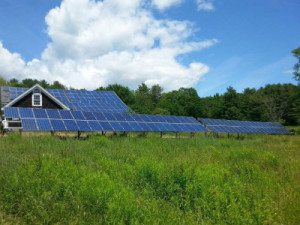In the end of year shuffle to negotiate the Bipartisan Budget in December, you may have missed this particularly bright spot: the extension of Federal Solar Tax Credits. The credits were scheduled to expire in 2016, but lawmakers extended them well into the future.
What are the benefits of solar tax credits?
The new extension maintains the present level of 30% tax credit for the total cost of solar  panel or hot water installation, with no cap on the total amount. In 2020, that tax credit drops to 26%, and a further decrease the following year to 22%. In 2022, the tax credit for homeowners will drop to zero, though projects that commence construction and are completed by 2023 will still qualify for the credit. There are no special requirements for the solar electric (PV) panels other than the photovoltaic systems must provide electricity for the residence, and must meet applicable fire and electrical code requirement. For solar hot water systems, the government requires the system to provide at least 50% of the residence’s heat to qualify for a 30% federal tax credit.
panel or hot water installation, with no cap on the total amount. In 2020, that tax credit drops to 26%, and a further decrease the following year to 22%. In 2022, the tax credit for homeowners will drop to zero, though projects that commence construction and are completed by 2023 will still qualify for the credit. There are no special requirements for the solar electric (PV) panels other than the photovoltaic systems must provide electricity for the residence, and must meet applicable fire and electrical code requirement. For solar hot water systems, the government requires the system to provide at least 50% of the residence’s heat to qualify for a 30% federal tax credit.
Limited time for other renewable credits
The downside for homeowners is that other renewable energy sources that were included in the 2006 federal credit formula will no longer qualify after the close of 2016. These alternative energy technologies include: Wind, Geothermal Heat Pumps, Fuel Cells using Non-Renewable Fuels, Fuel Cells using Renewable Fuels.
The upshot is that if you’re planning to include alternative energy in your new Katahdin Log Home, there’s still a healthy incentive through the end of the year for all forms, and solar will continue to be an excellent investment for construction through 2023. For more information on solar tax credits in your state, visit DSIRE.com.
